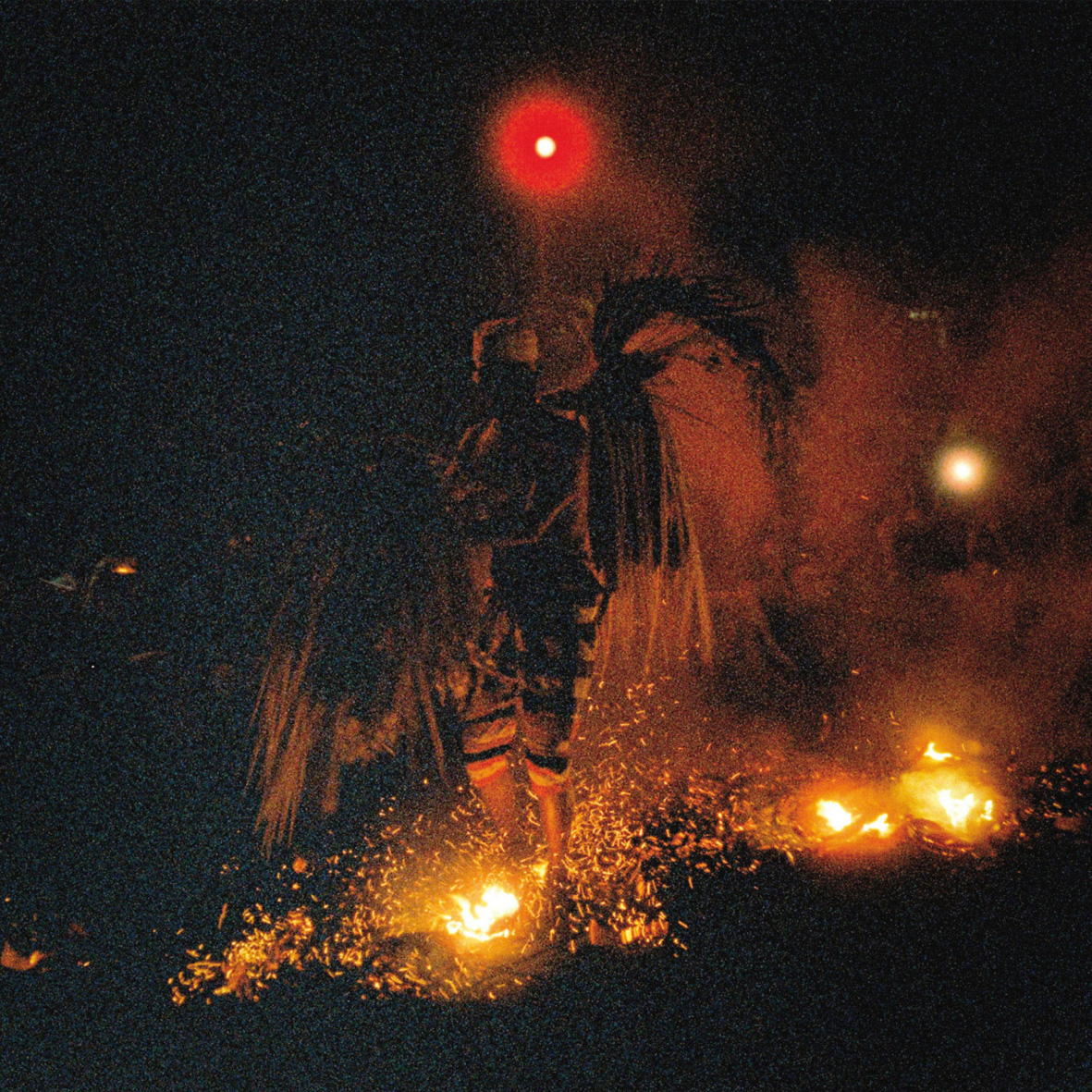 This new project is the debut release on the new Nahal imprint, bringing together Mondkopf's Paul Régimbeau and Lebanese artist Charbel Haber. In a rough sense, Good Luck in Death shares Mondkopf's heavy drone aesthetic, but Haber's presence shifts that vision into more diffuse, fragmented, and hallucinatory territory. The result is frequently quite haunting and sublime, as the duo craft an immersive world of darkly beautiful and blackened ambient drone mingled with flickering glimpses of a buried organ mass.
This new project is the debut release on the new Nahal imprint, bringing together Mondkopf's Paul Régimbeau and Lebanese artist Charbel Haber. In a rough sense, Good Luck in Death shares Mondkopf's heavy drone aesthetic, but Haber's presence shifts that vision into more diffuse, fragmented, and hallucinatory territory. The result is frequently quite haunting and sublime, as the duo craft an immersive world of darkly beautiful and blackened ambient drone mingled with flickering glimpses of a buried organ mass.
The opening "Mystery Malaise And Eternal Spleen" sets an eerily meditative scene, sounding like a mournful organ requiem that has been lysergically smeared.As it languorously unfolds, vaguely dissonant streaks of synth tones paint the sky and bleed together into a floating mass of uneasy harmonies.The central theme does not seem to have any particular arc, as the melody lazily waxes, wanes, and drifts along like a slow moving ghost, yet the piece maintains a wonderfully simmering intensity due to the buzzing, seismic throbs that regularly surge up from its lower depths.That beautifully half-real, half-ritualistic fever dream feeling essentially pervades the entire album, but Régimbeau and Haber find a lot of compelling territory to explore within its confines.I am especially fond of the second piece, "Fire Dreams And Reveries," in which a broken organ melody seems to be fighting to emerge from a sputtering, nearly dead speaker while being strafed by heavy, grinding swoops of gnarled synth.
The following "Fortune Telling Breeze" deepens the duo's palette a bit, as the stuttering and skipping organ drones are embellished by a mournful-sounding brass-like motif.Notably, neither artist is credited with any trumpets, flutes, woodwinds, or any other orchestral instrument, so it is a fool's errand to try to deduce which sounds are coming from which artist.Haber is credited exclusively with electric guitar, which should theoretically make his sounds fairly easy to delineate, yet there is almost nothing that sounds remotely like a guitar on this album at all.Whatever Haber played is so obscured by effects and processing that it completely blurs together with Régimbeau’s synths.I suppose that makes They Promised Us A Bright Future kind of a laptop album, yet the sounds that are being manipulated and reshaped feel surprisingly organic.I almost used the word "natural" instead, but there is very little that fits that description here."Supernatural," on the other hand, is an extremely apt description, as it is easy to envision a lonely, heartsick organist playing alone in a ruined cathedral as spirits swirl among the rafters and deep cracks start to appear in reality itself.In fact, the perversely titled closer, "Unforgettable Cabaret Nights," feels like the undulating cosmic horror that would likely bleed into that same scene once its precarious reality finally collapsed.To my ears, the only unforgettable cabaret night that the piece's sinister, see-sawing pulse and drugged, serpentine melody might evoke is one with blood-streaked walls and no living humans in sight.
For the most part, however, They Promised Us A Bright Future is not an overtly dark or menacing affair, though there are certainly enough encroaching shadows to give its precarious beauty an unwaveringly ominous tone.Instead, the album mostly feels like a gorgeously melancholy heaven being slowly gnawed apart by exterior infernal forces.It is quite an impressive tight-rope act, as Régimbeau and Haber construct a wonderfully heavy and twilit world of heaving drones and undulating harmonies imbued with a simmering tension that never dissipates or fully erupts.I was also especially impressed with Good Luck In Death's singular vision, as they have managed to carve out a striking and distinctive niche with their first release (as far as I know, absolutely no one else has thought to mine the "psychedelic organ mass mingled with slowly dawning dread" vein).In fact, this feels less like an album than an unsettling stroll through a mysterious gallery lined with increasingly macabre and tormented paintings, which is truly wonderful illusion that is exceeded only by the nagging sense that the barrier separating reality from the painted scenes has started to dissolve.
Read More

